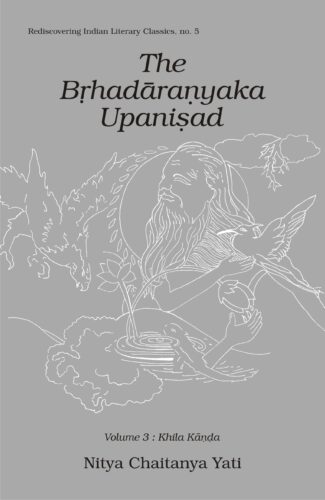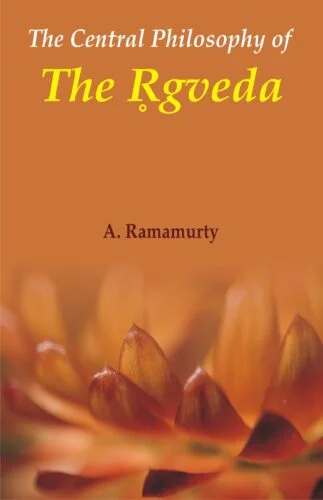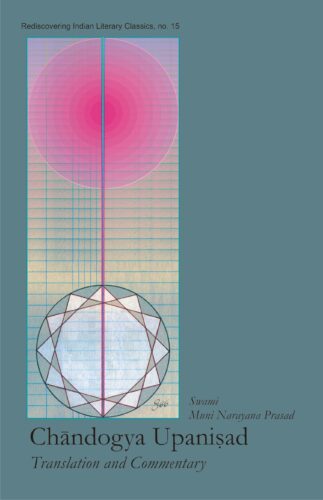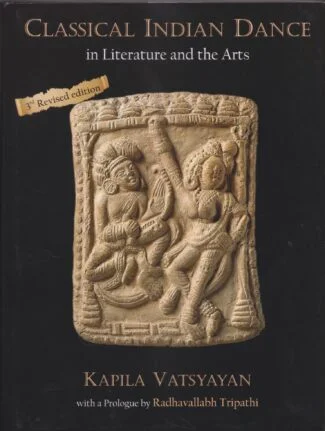Showing 13–24 of 166 results

Standing tall in the field of Bhagavad Gita commentaries, this book is the result of the revolutionary treatment given by Nataraja Guru to this ancient masterwork of the human race to be appreciated as a universally applicable psychology of life and living.
Nearing its fiftieth year of being continuously in print, Nataraja Gurus monumental analysis of one of the greatest philosophical classics of Planet Earth is now available in a new edition. Generations have benefited from its unique angle of vision, which introduces a universal framework that does not depend on faith to impart its message of infinite potential for every human being. The Gurus wry humor, fresh insights, and fearless challenges to prevailing orthodoxies, are clear marks of his style. His analysis is radical by any measure, yet it must be noted that much of the scientific and philosophic community has evolved over the same half century toward a similar global, broad-minded outlook to the one which the Guru brings to bear in these pages, and which not coincidentally is advocated by the Bhagavad Gita itself.

This is an extraordinary volume on Bhagavad-Gita in that, besides the usual Sanskrit verses, their meanings and commentaries, this book covers all the eighteen chapters in the form of essays containing the reflections of the author who has analyzed the topic in the light of modern thought in a broader spectrum.
This Exposition on the Bhagavad-Gita is an exception to the traditional translation of and commentary on the scripture. It covers all the eighteen chapters of the Gita in the form of essays, with English translation of almost all verses and commentaries thereupon. In addition, the essays do contain the reflections of the author who has analyzed the topics in the light of modern thought in a broader spectrum. The Sanskrit text in Devanagari script, with Roman transliteration, has been appended to the main text.
The Gita is not a religious book. It does not belong to any single faith. In the language of Aldous Huxley, it is the perennial philosophy of mankind. Keeping this context in view, the book has been addressed not only to the present citizens but also to the whole mankind which will inhabit the earth in the future.
This scripture had its birth in a battlefield. Symbolically speaking, everybodys life is a battleground. Arjuna represents all members of the human species. In a situation of agony and dejection, being utterly perplexed, he could not decide what to do and what not to do. The Gita provides practical solutions to the problems of life and leads the path to liberation. It humanizes and divinizes man. The present book gets success if it helps man ascend humanely and spiritually.

This is an extraordinary volume on Bhagavad-Gita in that, besides the usual Sanskrit verses, their meanings and commentaries, this book covers all the eighteen chapters in the form of essays containing the reflections of the author who has analyzed the topic in the light of modern thought in a broader spectrum.
This Exposition on the Bhagavad-Gita is an exception to the traditional translation of and commentary on the scripture. It covers all the eighteen chapters of the Gita in the form of essays, with English translation of almost all verses and commentaries thereupon. In addition, the essays do contain the reflections of the author who has analyzed the topics in the light of modern thought in a broader spectrum. The Sanskrit text in Devanagari script, with Roman transliteration, has been appended to the main text.
The Gita is not a religious book. It does not belong to any single faith. In the language of Aldous Huxley, it is the perennial philosophy of mankind. Keeping this context in view, the book has been addressed not only to the present citizens but also to the whole mankind which will inhabit the earth in the future.
This scripture had its birth in a battlefield. Symbolically speaking, everybodys life is a battleground. Arjuna represents all members of the human species. In a situation of agony and dejection, being utterly perplexed, he could not decide what to do and what not to do. The Gita provides practical solutions to the problems of life and leads the path to liberation. It humanizes and divinizes man. The present book gets success if it helps man ascend humanely and spiritually.

This dialectical narration of the Brhadaranyaka Upanisad will help the reader discover the ancient seers timeless insights to appreciate an integrated system of thought and experience what is real and enduring in his/her own essence.
The Brihadaranyaka Upanishad is one of the ten major Upanishads. A dialectical narration that unabashedly stands up to the rational scrutiny of the modern mind, it is directed towards both the individual aspirant caught up in the dark morass of confusion and the philosophic thinker in search of rare pearls of wisdom from humanitys treasury. Guru Nityas matchles commentary will enable the reader to discover the ancient seers timeles insights, to appreciate a fully-developed, integrated system of thought, and, most importantly, to learn to connect with what is real and enduring in his or her own essence. Schematically, the Brihadaranyaka Upanishad a brilliant discourse from the Yajur Veda is set out in three volumes, entitled: Madhu Kanda, Muni Kanda and Khila Kanda. In his planned three-volume thorough-going, meticulously analytical commentary. Guru Nitya distills the wisdom teaching of the Brihadaranyaka Upanishad, drawing on his intimate understanding of the human psyche, as well as both Eastern and Western philosophy, science, art and literature. Dwelling in turn on each of its 435 mantras, its poetic charm, myths, metaphors, images and symbols, Guru Nitya recreates and expands the Upanishadic vision of our own nature, human interaction, and the cosmos, and their relation to the unmoved essence of all. With highly useful appendices and a comprehensive index, the commentary will hold an enduring appeal for both scholars and discerning readers.

This dialectical narration of the Brhadaranyaka Upanisad will help the reader discover the ancient seers timeless insights to appreciate an integrated system of thought and experience what is real and enduring in his/her own essence.
The Brihadaranyaka Upanishad is one of the ten major Upanishads. A dialectical narration that unabashedly stands up to the rational scrutiny of the modern mind, it is directed towards both the individual aspirant caught up in the dark morass of confusion and the philosophic thinker in search of rare pearls of wisdom from humanitys treasury. Guru Nityas matchles commentary will enable the reader to discover the ancient seers timeles insights, to appreciate a fully-developed, integrated system of thought, and, most importantly, to learn to connect with what is real and enduring in his or her own essence. Schematically, the Brihadaranyaka Upanishad a brilliant discourse from the Yajur Veda is set out in three volumes, entitled: Madhu Kanda, Muni Kanda and Khila Kanda. In his planned three-volume thorough-going, meticulously analytical commentary. Guru Nitya distills the wisdom teaching of the Brihadaranyaka Upanishad, drawing on his intimate understanding of the human psyche, as well as both Eastern and Western philosophy, science, art and literature. Dwelling in turn on each of its 435 mantras, its poetic charm, myths, metaphors, images and symbols, Guru Nitya recreates and expands the Upanishadic vision of our own nature, human interaction, and the cosmos, and their relation to the unmoved essence of all. With highly useful appendices and a comprehensive index, the commentary will hold an enduring appeal for both scholars and discerning readers.

This dialectical narration of the Brhadaranyaka Upanisad will help the reader discover the ancient seers timeless insights to appreciate an integrated system of thought and experience what is real and enduring in his/her own essence.
The Brihadaranyaka Upanishad is one of the ten major Upanishads. A dialectical narration that unabashedly stands up to the rational scrutiny of the modern mind, it is directed towards both the individual aspirant caught up in the dark morass of confusion and the philosophic thinker in search of rare pearls of wisdom from humanitys treasury. Guru Nityas matchles commentary will enable the reader to discover the ancient seers timeles insights, to appreciate a fully-developed, integrated system of thought, and, most importantly, to learn to connect with what is real and enduring in his or her own essence. Schematically, the Brihadaranyaka Upanishad a brilliant discourse from the Yajur Veda is set out in three volumes, entitled: Madhu Kanda, Muni Kanda and Khila Kanda. In his planned three-volume thorough-going, meticulously analytical commentary. Guru Nitya distills the wisdom teaching of the Brihadaranyaka Upanishad, drawing on his intimate understanding of the human psyche, as well as both Eastern and Western philosophy, science, art and literature. Dwelling in turn on each of its 435 mantras, its poetic charm, myths, metaphors, images and symbols, Guru Nitya recreates and expands the Upanishadic vision of our own nature, human interaction, and the cosmos, and their relation to the unmoved essence of all. With highly useful appendices and a comprehensive index, the commentary will hold an enduring appeal for both scholars and discerning readers.

This dialectical narration of the Brhadaranyaka Upanisad will help the reader discover the ancient seers’ timeless insights to appreciate an integrated system of thought and experience what is real and enduring in his/her own essence.
The Brihadaranyaka Upanishad is one of the ten major Upanishads. A dialectical narration that unabashedly stands up to the rational scrutiny of the modern mind, it is directed towards both the individual aspirant caught up in the dark morass of confusion and the philosophic thinker in search of rare pearls of wisdom from humanity’s treasury. Guru Nitya’s matchles commentary will enable the reader to discover the ancient seer’s timeles insights, to appreciate a fully-developed, integrated system of thought, and, most importantly, to learn to connect with what is real and enduring in his or her own essence. Schematically, the Brihadaranyaka Upanishad — a brilliant discourse from the Yajur Veda — is set out in three volumes, entitled: Madhu Kanda, Muni Kanda and Khila Kanda. In his planned three-volume thorough-going, meticulously analytical commentary. Guru Nitya distills the wisdom teaching of the Brihadaranyaka Upanishad, drawing on his intimate understanding of the human psyche, as well as both Eastern and Western philosophy, science, art and literature. Dwelling in turn on each of its 435 mantras, its poetic charm, myths, metaphors, images and symbols, Guru Nitya recreates and expands the Upanishadic vision of our own nature, human interaction, and the cosmos, and their relation to the unmoved essence of all. With highly useful appendices and a comprehensive index, the commentary will hold an enduring appeal for both scholars and discerning readers.

This book offers a fresh exposition of the Buddhist theory of meaning (apohavada) against the backdrop of Indian linguistic thought and shows how this theory is positioned vis-a-vis current issues and assumptions in language. Consists a very useful glossary.
For over two millennia, language has been one of the prime concerns in nearly all philosophical systems of India: Grammar, Mimamsa, Nyaya, Vaisheshika, Jaina and Bauddha which, in turn, not only have shaped the Indian perception of vak, but also constitute the essential background to study the major concerns of language that have been taken up in the subsequent phases of philosophical-linguistic developments. Rajnish Mishras book offers a fresh, in-depth exposition of the Buddhist theory of meaning (apohavada) against this stupendous backdrop of Indian linguistic thought and also tries to show how this time-honoured theory is positioned vis-a-vis the current issues and assumptions in language. Surveying the evolution of apoha across the ages specially in its four kindred perspectives, viz, the Abhidharmika, the Sautrantika, the Yogacara and the Madhyamika schools of Buddhist philosophy, the author sets out, on its basis, a cognitive-epistemological model for literary analysis and illustrates as well the applicational aspects of this model with meticulous analysis of Wordsworths poetic masterpiece, Tintern Abbey. Based, as it is, on wide-ranging primary sources, including the Buddhist philosophical-epistemological texts in Sanskrit, the book sheds altogether new light on the Buddhist theory of meaning and, simultaneously, argues against the fallacies that have cropped up around its latter-day interpretations. A work of specific contemporary relevance to the ongoing post-structuralist debates, the book also carries a comprehensive, highly valuable cross-referential glossary of conceptual Sanskrit terms.

The book deals chiefly with the Rigvedic concept of divine, and the mode of divine revelation to the Vedic seers. It is a work of its kind in the field of Vedic Interpretation and offers a new perspective and direction to understanding the meaning of Vedic thought and symbolism.
Rigveda, a collection of hymns which are primarily prayers and praises addressed to various deities, is a religious/spiritual classic which influenced the formation and development of Indian way of life and culture. The concept of divine is central to it. The meaning of divine though has undergone significant changes in the long history of Hinduism depending upon its interaction with other world religions, the basic Vedic idea of divine still remains central to the Hindu concept of divine or God.
In this work we discuss mainly the meaning of divine and the mode of its revelation to the seers of the Rigveda in the state of divinely inspired devotion. This is what the Veda reveals or says about itself. To understand this claim of the Veda requires a deep understanding of the Vedic symbolism employed in communicating the meaning of divine inspiration. The seer-poets resort to symbolic use of language to communicate their vision of the divine, the birth of divine consciousness in them and its expression in the form of hymns. By closely following the text of the Rigveda, one can understand the symbolic use of certain words, and appreciate the meaning of the Veda which would otherwise be highly obscure and utterly unintelligible. Unless we understand the meaning of divine and the mode of its revelation to the Vedic seers it is difficult to understand and appreciate the meaning of the Veda or to interpret it. The Veda in its literary form comes into existence when the divinely inspired devotion is expressed in the form of prayer or hymns. When divine inspiration is offered back to the divine in the form of prayer and praise, human life finds its supreme fulfilment, and its attitude to world or nature gets transformed into one of reverence and worship.

Chandogya is the most intriguing of all the Upanisads. It begins with directing the priests of a Soma-yaga to see the hidden wisdom-significance in what they perform and recite as a brute ritual. The present commentary explicates in a lucid way how thinking progresses in this Upanisad, along with unravelling its schematic, structural and dialectical intricacies, both subjective and objective, both universal and particular.
Chandogya is the most intriguing of all the Upanishads. It begins with directing the priests of a Soma-yaga to see the hidden wisdom-significance in what they perform and recite as a brute ritual. This sublimating of ritualism gradually leads us to perceiving the entire life system as a yaj¤a held in and performed by Brahman. The next step this perception leads us to is “sarvam khalvidam brahma” (everything here indeed is Brahman). Then the enquiry as to what this Brahman is, begins. The answer we arrive at is “tat tvam asi” (That thou art). Finally we realize “atmaivedam sarvam” (atma indeed is everything here, or myself indeed is everything here). From this self-identity with “everything,” with Brahman, we never return to our identity with individuated forms pertaining to the world of becoming. The present commentary explicates in a lucid way how thinking progresses in this Upanishad, along with unravelling its schematic, structural and dialectical intricacies, both subjective and objective, both universal and particular.

The book vividly presents, analyses and critiques the varied facets of Indian aesthetics, especially the theory and technique of classical Indian dance, while doing a penetrating study of interrelationship that dancing has with literature, sculpture and music. In doing so, the book surveys and analyses the contribution of all great Sanskrit authors, theoreticians, playwrights of ancient and classical India along with the works many Bhāṣā scholars of arts, aesthetics and literature.
This volume is the result of many years of painstaking research in a field, which had been neglected by art historians, and thus presenting an idealistic view of the whole tradition of Indian art and aesthetics. This definitive work on the inherent interrelationship of the Indian arts is a path-breaking endeavour, treading into a domain which no one had explored. For that to happen, the author has delved deep into enormous mass of literature on the subject and has also surveyed the portrayal of dance figures in ancient temples. With Dr Kapila Vatsyayan’s profound knowledge of various dance forms as a performing artist of her own standing and having studied the sculptures and artefacts minutely, the book emerges so scholarly emanating the wisdom and know-how of a persona, endowed with the unique combination of a researcher, an art historian and an aesthetician par excellence.
The book vividly presents, analyses and critiques the varied facets of Indian aesthetics, especially the theory and technique of classical Indian dance, while doing a penetrating study of interrelationship that dancing has with literature, sculpture and music. In doing so, it surveys and analyses the contribution of great Sanskrit authors, theoreticians, playwrights of ancient and classical India such as Bharata, Bhāsa, Kālidāsa, Śūdraka, Bhavabhūti, Abhinavagupta, Jayadeva and many more along with numerous Bhāṣā scholars of arts, aesthetics and literature, covering each and every nook and corner of the Indian subcontinent.
This highly scholarly work should invoke keen enthusiasm among Sanskritists, art historians, dancers and students of varied art forms alike, and should pave the way for ongoing researches on all the topics covered within its scope.

This book brings into focus the problems associated with conveying the central concepts and categories relating to some key areas of Indian classical thought through the well-established lexicons available in English, the language of power. It covers thus Epistemology, Ontology, Aesthetics, Moral Philosophy, Philosophy of Language, Religion and Logic, Political Theory, History, and Culture Theory from India and abroad.
This book is based on the proceedings of a Workshop held in 2011 on Rendering of the Categories of Classical Indian Thought in the English Language: Perspectives and Problems.
Although scientific texts appear to have successfully solved the problem by standardizing technical terms for all languages of instruction and communication, the problem of translation becomes acute when dealing with vocabularies of long standing belonging to ancient cultures, as is the case in India.
More urgently, we know that the thought worlds of ancient and medieval India are still very much alive and with us. Thus to even begin to understand contemporary India and its dilemmas, it is essential to come to grips with the foundational concerns, wisdom and follies of a civilization that has refused to die. What we find, however, is that when it comes to the understanding of our own thought traditions, their rendering into the English language in the colonial (and post-colonial) period, has only served to obscure the great cultural divide between the history of Western thought and our own.
The workshop thus aimed at bringing into focus the problems associated with conveying the central concepts and categories relating to some key areas of Indian classical thought through the well-established lexicons available in English, the language of power.
The multidisciplinary gathering included not only philosophers from the fields of Epistemology, Ontology, Aesthetics, Moral Philosophy, Philosophy of Language, Religion and Logic, but also specialists in the fields of Political Theory, History, and Culture Theory from India and abroad.
| × |
|
Chandragupta Maurya 1 x ₹360.00 |
| × |
|
Theory of Karma: As Interpreted in Brahmasutra and Bhagavadgita 1 x ₹900.00 |
| × |
|
Towards a New Age of Nonviolence 1 x ₹1,260.00 |
| × |
|
Buddhism in Karnataka 1 x ₹248.00 |
| × |
|
Bachpan-Childhood 1 x ₹162.00 |
| × |
|
Animal Liberation and Environmental Ethics 1 x ₹801.00 |